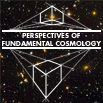Speaker
Ignatios Antoniadis
Description
In addition to simple scale invariance, a universe
dominated by dark energy naturally gives rise to
correlation functions
possessing full conformal invariance. This is due to the
mathematical
isomorphism between the conformal group of certain
three dimensional
slices of de Sitter space and the de Sitter isometry group
SO(4,1). In
the standard homogeneous, isotropic cosmological
model in which
primordial density perturbations are generated during a
long vacuum
energy dominated de Sitter phase, the embedding of flat
spatial 3-dim
sections in de Sitter space induces a conformal invariant
perturbation
spectrum and definite prediction for the shape of the
non-Gaussian CMB
bispectrum. This form for the bispectrum is intrinsic to
the
symmetries of de Sitter space, and in that sense,
independent of
specific model assumptions. It is different from the
predictions of
single field slow roll inflation models, which rely on the
breaking of
de Sitter invariance. We propose a quantum origin for
the CMB
fluctuations in the scalar gravitational sector from the
conformal
anomaly that could give rise to these non-Gaussianities
without a slow
roll inflation field. Moreover we argue that conformal
invariance also
leads to the expectation for the relation $n_S - 1 = n_T$
between the
spectral indices of the scalar and tensor power
spectrum. Confirmation
of this prediction or detection of non-Gaussian
correlations in the
CMB of the bispectral shape function predicted by
conformal invariance
can be used to establish the physical origin of primordial
density
fluctuations, and distinguish between different dynamical
models of
cosmological vacuum dark energy. [JCAP09(2012)024,
arXiv:1103.4164]

